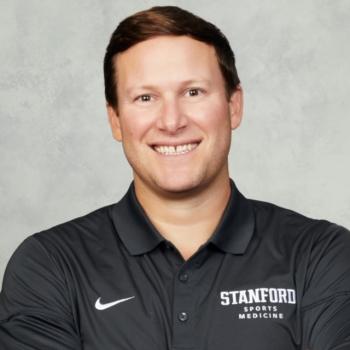Current Research and Scholarly Interests
My research focuses on ways to augment tissue healing, improve human performance, and prevent musculoskeletal injuries. Approaching these challenges through parallel basic science and clinical pathways, our team works from the “bedside to the bench and back to the bedside”, identifying areas of clinical need to deliver evidence-based solutions for patients.
We collaborates with orthopaedic surgeons, non-surgical physicians, and researchers within bioengineering, human performance, and musculoskeletal imaging across the Stanford campus. The team is developing novel methods to accurately record human movement (including wearable technology, phone-based systems), rapid MRI imaging protocols, and exploring the use of biomarkers to track injury and recovery. This research builds on my earlier work, which utilized portable, inexpensive software for Microsoft Kinect to detect knee injury risk in youth athletes performing a drop vertical jump test. The team’s multifaceted goal is: 1) develop innovative methods to screen for injury risk (i.e. youth athlete non-contact ACL), 2) create targeted intervention programs to reduce risk, 3) enhance athletic performance; and 4) improve accuracy of return to play testing following injury/surgery (i.e. clinical evaluation, biomarkers, functional tests, imaging analysis for healing).
In the laboratory,our team investigates cellular and molecular deficiencies in tissue types including tendon, ligament, articular cartilage, and meniscus. By understanding aberrant pathways leading to tissue injury, they can identify innovative therapeutic targets for intervention. In collaboration with the Genetic Engineering and Synthetic Biology laboratories, Dr. Sherman’s research has explored the role of orthobiologic agents such as platelet rich plasma (PRP) and bone marrow aspirate concentrate (BMAC) for tissue healing in patella tendinopathy (the breakdown of collagen in a tendon). Our lab is also investigating the use of CBD for musculoskeletal applications as an alternative to commonly used local anesthetics and cortisone derivatives. In my earlier work, we researched the cellular toxicity of such applications.
In addition to basic science research, I have helped to build a Sports Medicine clinical research team that includes several full-time clinical research coordinators, residents, fellows, and students. The team collects prospective outcomes on their patients using a novel data collection platform called Patient IQ. The group is part of the JUPITER study which is the largest, multicenter study ever assembled in patellofemoral instability. They are additionally planning to enroll in FDA-approved clinical studies investigating pioneering strategies for knee cartilage restoration, joint preservation, and orthobiologic injections for osteoarthritis. Recent clinical publications explore outcomes in meniscus preservation and transplantation, medial patellofemoral ligament reconstruction, osteochondral allograft and matrix-induced autologous chondrocyte implantation (MACI), and surgical augmentation using PRP/BMAC. The clinical research team actively reports results of non-surgical and surgical interventions to continue to introduce new knowledge to the field, with the goal of improved patient outcome.


